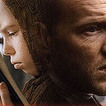Exposure on an M3?
-
Recently Browsing 0 members
- No registered users viewing this page.
-
Similar Content
-
- 3 replies
- 1,136 views
-
- 0 replies
- 141 views
-
Q3 exposure issue. 1 2
By Igster,
- 32 replies
- 5,314 views
-
- 0 replies
- 124 views
-
- 0 replies
- 128 views
-



Recommended Posts
Join the conversation
You can post now and register later. If you have an account, sign in now to post with your account.
Note: Your post will require moderator approval before it will be visible.